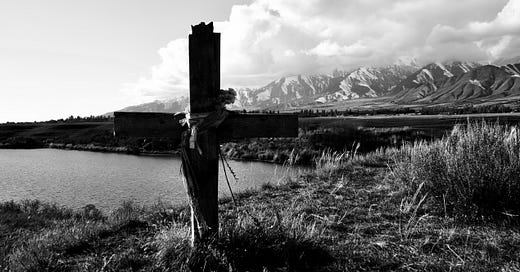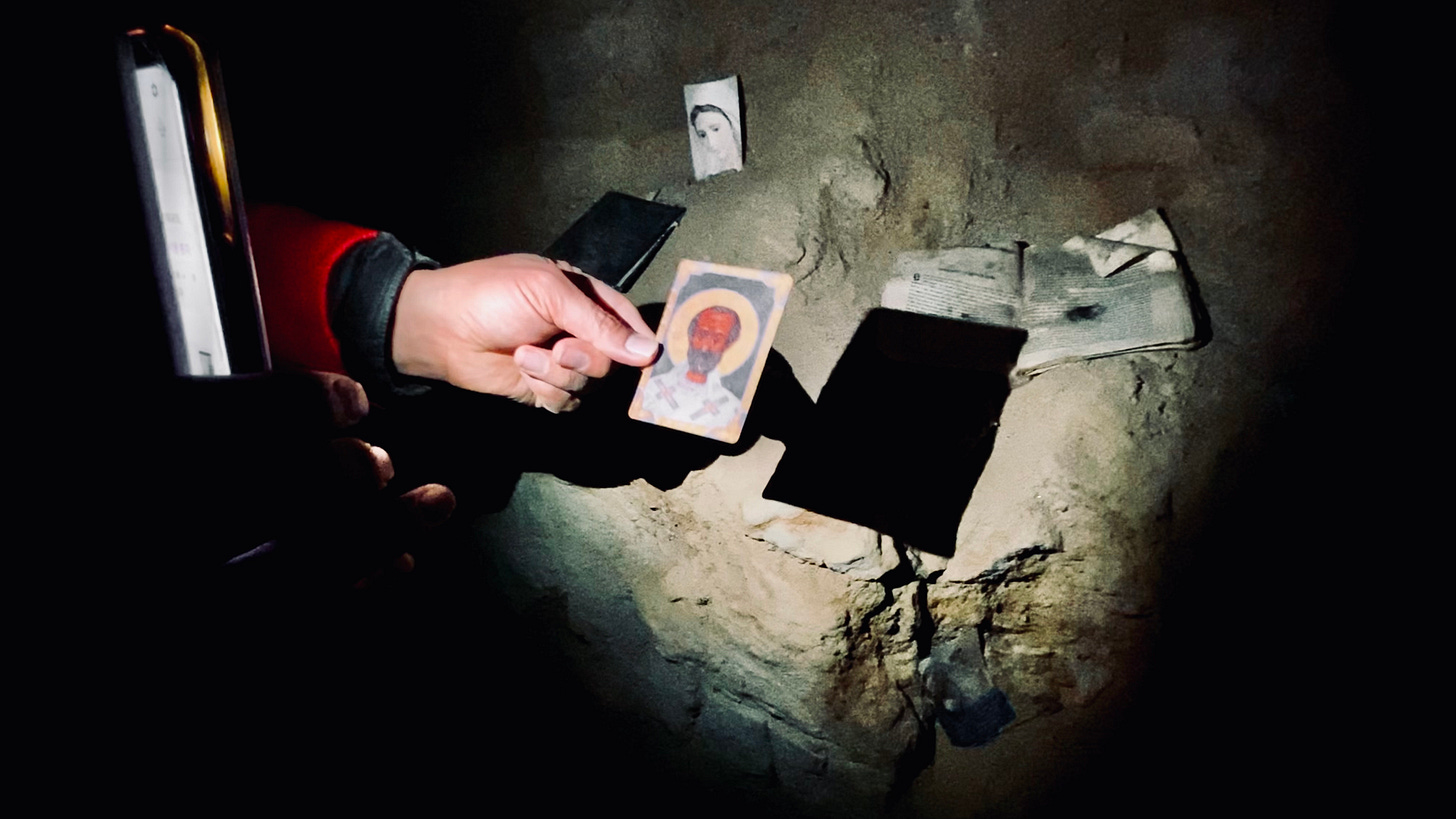“Issyk-Kul is my cradle. It is dear to me because it cherished me in my early years, gave me strength in my adolescence, nourished and energized me whenever creativity required solitude and the intense labor of thoughts. And wherever I have happened to be, whether on trips around the country or at work abroad, I have not seen anything like Issyk-Kul, nothing that could overshadow its marvelous beauty” —Chinghiz Aitmatov, Kyrgyz author
On the northern shore of Lake Issyk-Kul live a fisherman and his family. They are here mostly alone, away from the village and the other houses, owning a sizable stretch of land that juts out into the water as a peninsula. The weeds grow high in their yard, and the dog they own is chained up and barking. But their garden is well kept, and they’ve added a new patio for evening meals that includes a vivid mountain view.
It takes five hours to travel to this family from the capital city of Bishkek. They live past the tourist resorts, past the attractions and lake towns, getting closer to the borders of China and Kazakhstan and to the parts of Kyrgyzstan that few people seem to talk about.
There are no signs pointing to their home, no road markers to indicate which way to go. The village they are officially residents of hardly has any signs either, so it’s easy to get confused even if you’ve been here before. But once you do find their village, a turn down a dirt road down another dirt road leads eventually to their home.
The family is welcoming but keeps their distance. They won’t take your money, not at this point at least, and they certainly won’t say many things to you. But they will open the door of their rusty gate for you, lead you through the weeds and past the growling dog, and point you to where you want to go.
. . .
I’m standing on the very edge of their property, Lake Issyk-Kul surrounding me on nearly every side. It’s taken me and my guide several minutes to get to this point from their entrance. The dirt path they’ve made is overrun with branches and grass, and the hill they pointed us to is much steeper than it appears. Thankfully, though, the top of the hill is flat and with much fewer obstacles.
Right at this very point, on the lookout from the edge of the hill, somebody has put up a wooden cross only a few feet tall. It’s been wrapped several times in ribbon and dressed with wildflowers.
My guide gives me a few minutes to wander the hill, then explains what I’m seeing.
“This is the site of an ancient Armenian monastery, dating from several centuries ago. Some people think this is where the the body of St. Matthew the Apostle has been buried.”
I stare at the ground for a little bit while my guide continues.“In the 1300s, a map was made in Europe, describing an Armenian monastery on the shore of a lake called Issyk Kol. The map said that the Armenian Christians held the body of St. Matthew at this site. And a decade or so ago, researchers found Christian artifacts written in Armenian and Syriac script along this area.”
My guide begins to walk down the side of the hill, away from me. “They also excavated a catacomb. Want to see?”
. . .
In the cradle of the country, the retreat home of the region, the place of escape for thousands of Central Asians every year, a dusty Christian catacomb lays untouched in a fisherman’s backyard. The entrance here is also easy to miss; it’s not much taller than the cross at the top of the hill nearby. My guide tells me that certain entrances have been blocked off for fear of collapsing, so we’re forced with this one, crawling on our hands and knees into a very literal grave.
The entrance widens after a few seconds, and we are eventually able to slouch our backs and stand a little. With phones and flashlights we make out a series of tunnels and rooms. It’s easy to tell that this is, in fact, a catacomb—in every wall a hole has been dug out just the right size for a body. Dust scatters all across our jackets and hair, choking us out, sending us both into fits of coughing. But we keep wandering the passageways, sometimes with hunched backs, other times on our knees.
He takes me into one room with more standing space and points his flashlight towards the wall. Here, I’m met with something out of place: a wall of Russian icons and Bibles.
“People have come here to pray, I think,” my guide says through a cough.
. . .

The fisherman does not take money from us. He says that since the pandemic, he hasn’t seen anyone interested in the catacomb at all. It was once a source of income for him, when Orthodox tourists or foreigners would come in like pilgrims to find St. Matthew. We are some of the first people to come to the spot in over a year.
On the drive back, my guide, who has known the fisherman for a while, explains, “He really doesn’t care too much about the place itself. Of course, he wants people to come, but he personally doesn’t think too much about it. It sometimes feels like he doesn’t really value the place as he should.”
My guide doesn’t give a reason for this, but part of me wonders if it has to do with the nature of this site. There is a vast expanse between the fisherman and the Armenian church, both above and below the ground; it plays no part in his own culture, his own background. It stems from a completely different world, and maybe he’s happy for it to remain that way.
. . .
But what if I were to tell him about a man named Nikolai Pantusov, a Russian official who in the 1880s found hundreds of Christian gravestones in northern Kyrgyzstan and southern Kazakhstan? What if I were to mention that many of these tombstones were written in Turkic script, the language used by Central Asians during that time? What if I were to tell him that the people buried at these grave sites were native to the region?
What if I were to take him to Suyab, the ancient city and archeological site, where a Nestorian church has been excavated? What if I were to show him the evidence that people who lived in this city were ancestors of modern day Central Asians?
What if I were to point him to an excavation site in Eastern Kazakhstan, where they have recently uncovered 90 Christian graves? What if I showed him that forensic evidence is indicating the people being uncovered were indigenous to the region?
What if I were to tell him that, according to a conversation I recently had with a leading archeologist in Central Asia, there’s reason to believe that during the Middle Ages, there were Christian populations in over eighty cities stretching through Kyrgyzstan and Kazakhstan?
What if I were to show him this photo of a Christian tombstone, written in Uighur script, found at the cradle of Kyrgyzstan?
In other words, is the gap between the fisherman and his backyard really all that wide?
. . .
This is the second article of a multi-part series. The first article can be found here. Please consider subscribing to receive articles as soon as they are published. Thanks!






